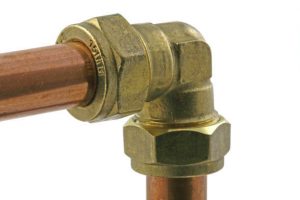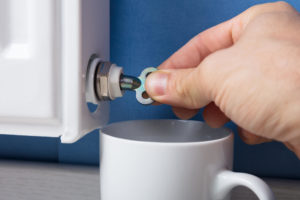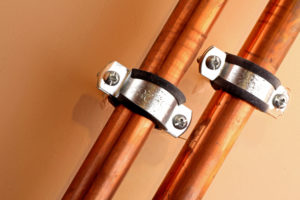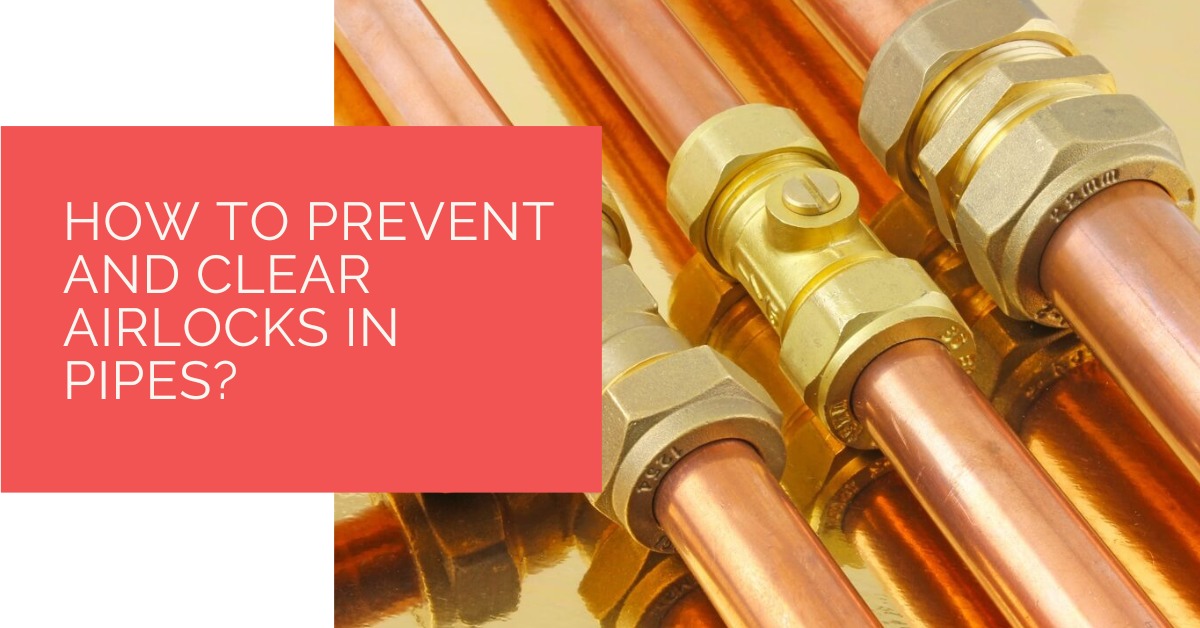Is the flow of water from your pipe slower than usual? Do you have any idea what the possible cause might be? If so, then you are at the right place. Once you’ve finished reading this article, you’ll be able to identify the root cause of this problem, resolve it on your own, and stop it from happening again.
There are several reasons the water flowing through your pipes has low pressure, but one important reason could be an airlock in the pipes.
So, what exactly is an airlock, and how do we recognise one? To put it simply, an airlock is a limitation in the flow of water as it goes to the pipes. Hot water pipes frequently experience such airlocks.
If you’re interested in knowing more about it, keep reading.
Contents
Key Takeaways
- An airlock in pipes can cause low water pressure, and common causes include air pockets in hot water pipes and issues with the main water supply system.
- Signs of an airlock in pipes include fluctuating water pressure, low hot and cold water pressure, and hot water taps not supplying water.
- Practical solutions for fixing a pipe airlock include bleeding radiators, opening all faucets, using showerheads, employing a washing machine, and seeking help from a heating engineer; preventing airlocks involves ensuring smooth water flow, avoiding high points in pipes, and submerging header container inlets.
What Leads to Water Pipe Airlock?
Among various reasons, the most common causes of airlock in pipes are:
A Pipe with Air Pockets
Hot water pipes are commonly affected by this issue. Sometimes the tank’s water pressure may be insufficient to clear air obstructions from the pipes, preventing the water from flowing normally. This, as a result, creates pockets of air, resulting in low pressure water.
Primary Problems with Main Water Supply
Inefficient circulation pumps or obsolete storage water tanks can all cause airlock in central heating systems. Your hot-water storage tank may not be filling as quickly as it is being empty if you see such frequent airlocks in your pipes.

What are the Signs of Airlock in Pipes?
It isn’t very difficult to recognise signs of an airlock in your pipes. Some typical indicators of an airlock in your pipes could be:
- Pipes are knocked or hit because of the fluctuating water pressure.
- Low hot and cold waterpressure makes it difficult for water to reach the faucets.
- The hot water tapis not supplying any water. The pipes will be carrying the cold water without obstruction. However, the hot water will either stop flowing altogether or flow in erratic patterns.
Practical Solutions for Fixing a Pipe Airlock
Following are five efficient ways to fix an airlock in a pipe:
1. Bleeding the Radiators
Bleed all of your home’s radiators if a boiler airlock occurs. Enter the basement and switch off each radiator individually. Start with the first item on the list and work your way down to the last. After bleeding the return valve, shut it.
Make sure to remember how many spins it took for your radiator valves to open. Then, use the same amount of twists to shut them at the end of the procedure. Once you have finished, reopen each radiator valve starting with the first one. The airlock will now release, hopefully!

2. Open all the faucets of your home.
This is one of the most fun and simple techniques, which can help without the need for a specialised tool or experience. Simply turn on all of your house’s faucets at once. Despite being somewhat ineffectual, it causes an increase in pipe pressure that rattles an airlock out. To make this procedure effective, make sure to turn on the showerhead and all the sink faucets.
This procedure will require a little patience because it can take several minutes of operation before the airlock breaks. This method can dislodge an airlock that may develop in difficult-to-reach areas and is effective for all your home’s pipes.
3. Fixing Pipe Airlocks Using Showerheads
Take the showerhead out of the connecting pipe and cover it in three or four plastic bags. This procedure creates a membrane that aids in returning pressure to the pipes. This technique is efficient and very helpful since it uses extremely high pressure to move water. After adding the plastic bags, replace the showerhead in its location.
Turn off the hot water exit at your header tank while opening the cold one. It is essential to turn on the shower’s cold and hot water faucets. Pressure will be generated and returned through the pipes to release the airlock.
After removing the showerhead, you can turn off the shower water. Remove the plastic bags, then put the showerhead back in place. Turn back the hot water in the basement and then turn it on.
Compared to the other methods, this necessitates a little work. But when done correctly, it is quite powerful.

4. Fixing the Pipe Airlock Using a Washing Machine
Here is the best method for you if your home does not have a two-tap system. You can use it if the airlock needs additional strength to break apart. With this technique, you have to use your washing machine’s power to remove the airlocks in the pipes. But remember that only automatic washing machines with connections for cold and hot water are advised to be used.
In accordance with this technique, shut off the valves on both of your washing machine’s inputs and separate them with a hosepipe. Now activate the cold and hot water valves and leave both faucets open for a brief period of time. The increased pressure will remove your pipes’ airlocks.
5. Fix the Airlock in Pipes by Employing a Hosepipe
In order to use this technique, you must attach the hosepipe to the troublesome valve and then wrap the other end of the pipe around a functional tap. First, make sure the seal around the pipe is in good shape, doing this will ensure that no water or air pressure escapes during the process. Now, firmly pull up the pipe ends, and turn the problematic tap up.
Open the tap and turn on the operational tap. The hose line will fill with water and build pressure inside the airlocked pipe. In time, this will raise the pressure inside the pipes and release the airlock. After a few minutes, try the tap again after removing the hose.
6. A Heating Engineer Can Help You Open an Airlock
It’s time to call a heating engineer if you’ve tried everything to clear the airlock but still aren’t getting hot water. A heating technician will first determine whether an airlock is the root of the issue and if so, will empty the system of any trapped air.
Different Ways to Avoid Airlocks in Water Pipes
You can prevent a pipe airlock by:
- Making sure that the water flowing through the pipes moves very quickly in order to carry all air bubbles all the way to the other end of the pipeline
- Ensuring that there are no high points where air bubbles could develop or that the pipeline is either constantly rising or level.
- Ensuring that the pipe does not receive any air. You can accomplish this by making sure that the header container inlets are sub-surfaced.
We believe you can effectively repair your pipes to their best working condition by using the airlock as mentioned above in pipes removal techniques without even hiring a professional plumber. These techniques have the advantage of not needing any specialised tools or equipment. With a few straightforward methods, it may be completed fast and efficiently. All you need is a hosepipe and a couple of plastic bags for the airlock in your pipes.
Heat Pump Source: Reliable Heating and Cooling Solutions
At Heat Pump Source, we take pride in our unwavering commitment to serving the UK with top-tier HVAC solutions. From the efficiency of heat pumps and the cool relief of air conditioning to the warmth of boilers, radiators, and underfloor heating, our dedicated team is always at the forefront of innovation. We understand the unique needs of every household and business, and we strive to provide dependable health and cooling products and services that are tailored just for you. Ensuring your comfort and satisfaction is our utmost priority. Whether you have questions, need guidance, or require support, we’re always here to assist. Please don’t hesitate to contact us; we’re eager to be of service.
Conclusion
There are a lot of factors that might lead to the airlock problem in your pipes and difficulty with the pipes’ effective operation. However, utilising the prevention methods in addition to the remedy will help you with the airlock clearance as outlined in the article.
About the Author
At Heat Pump Source, our articles are the product of a collaborative effort among a team of highly skilled HVAC experts. Our dedicated professionals, hailing from diverse backgrounds in heating, ventilation, air conditioning, and refrigeration, contribute their extensive knowledge and experience to every piece of content. This multidisciplinary approach ensures comprehensive coverage. Our commitment is to deliver authoritative, reliable, and tailored advice to meet the unique needs of every household and business across the UK.

